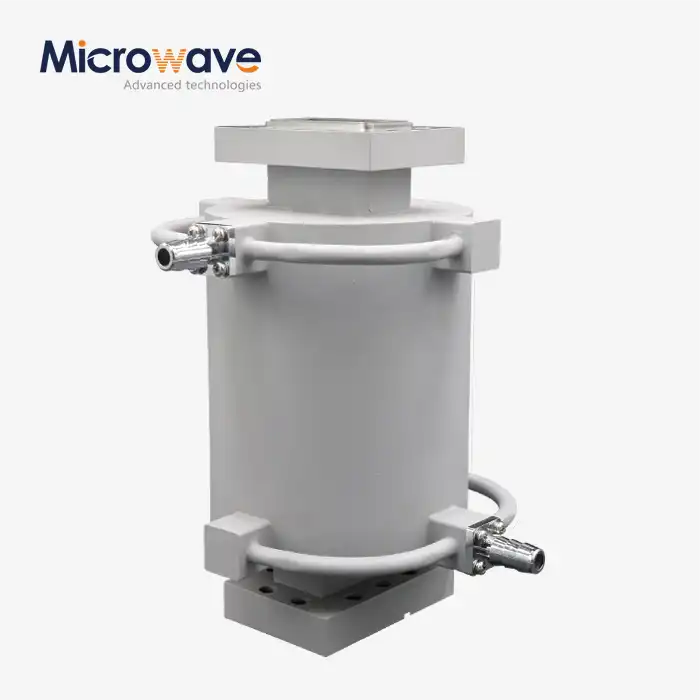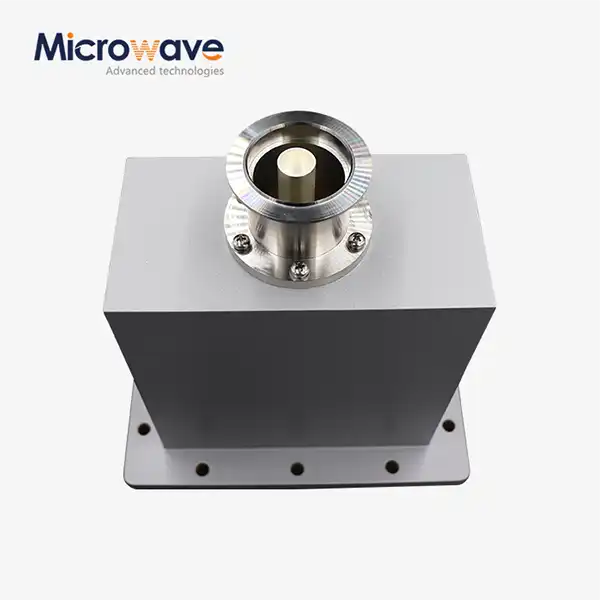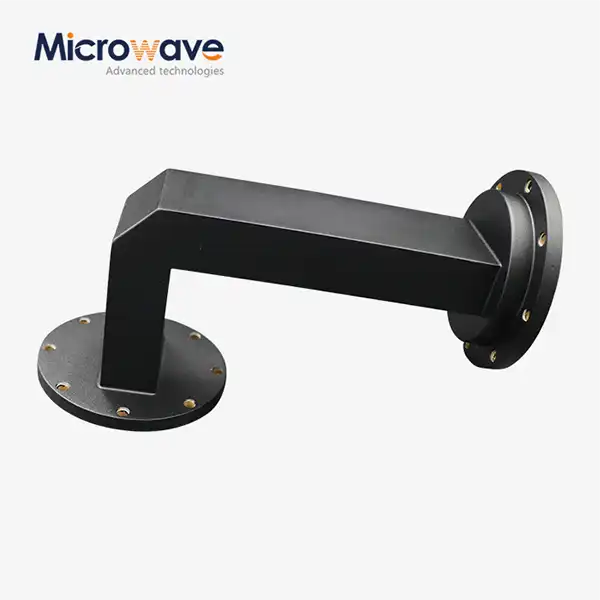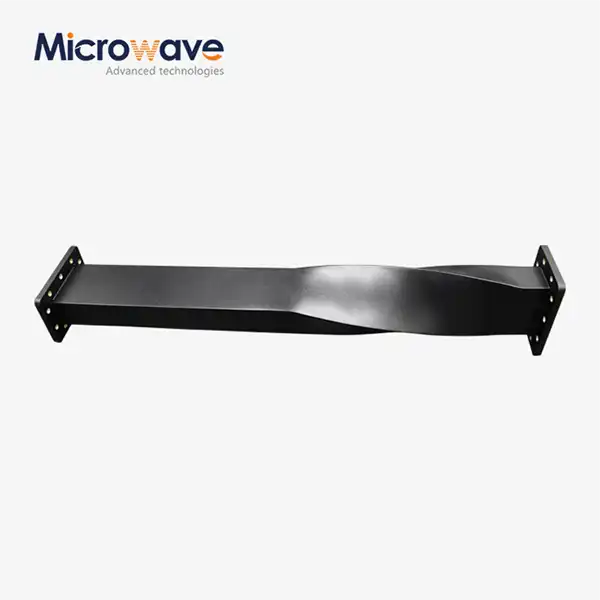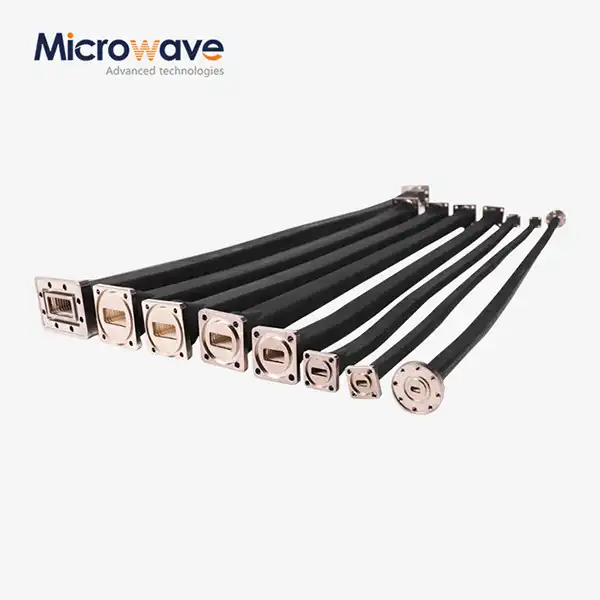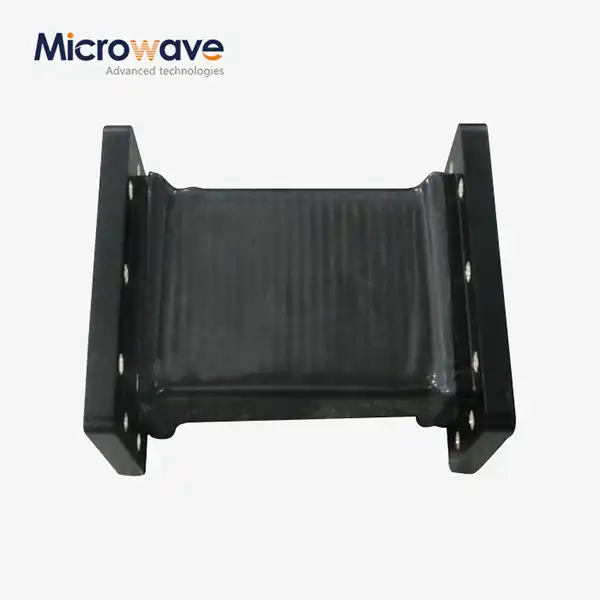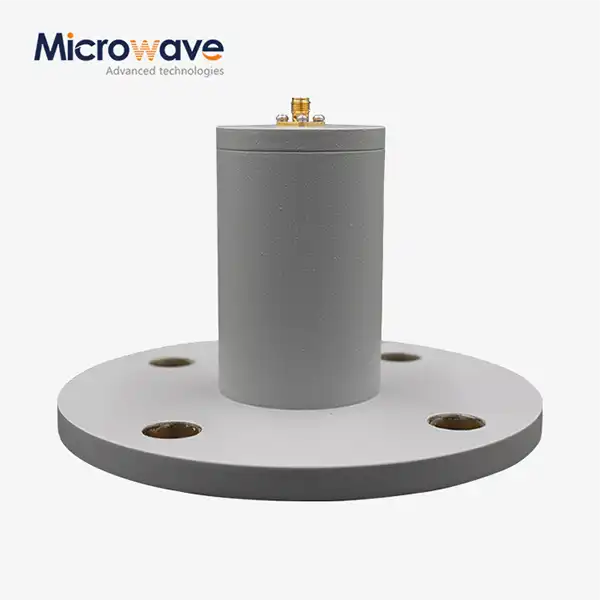Can flexible seamless waveguides replace traditional rigid waveguides in all applications?
The question of whether flexible seamless waveguides can fully replace their rigid counterparts is one that resonates throughout the microwave engineering community. As transmission systems become more complex and space constraints more challenging, engineers are increasingly turning to flexible solutions. Flexible Seamless Waveguides offer remarkable advantages in many scenarios, providing the adaptability needed for complex installations while maintaining excellent signal integrity. However, the complete replacement of traditional rigid waveguides across all applications requires careful consideration of specific performance requirements, environmental conditions, and technical specifications. This exploration delves into the capabilities, limitations, and ideal use cases for flexible seamless waveguide technology in today's demanding communication and defense systems.
Comparing Flexible and Rigid Waveguide Performance Characteristics
Signal Transmission Efficiency Across Different Frequencies
Flexible Seamless Waveguide technology represents a significant advancement in high-frequency signal transmission systems. When evaluating signal efficiency, these flexible solutions demonstrate impressive performance metrics that often rival traditional rigid options. The seamless construction of Advanced Microwave Technologies' Flexible Seamless Waveguide minimizes insertion loss, a critical factor for maintaining signal integrity across the transmission path. This performance characteristic is particularly valuable in applications operating at higher frequency bands, where even minimal signal degradation can significantly impact system functionality. With capabilities extending up to 110 GHz, these waveguides meet the demanding requirements of modern telecommunications and satellite communication systems. The precision engineering employed in their manufacturing ensures consistent electrical performance throughout the waveguide's length, regardless of its bent configuration. This consistency is essential for phase-sensitive applications where signal timing and waveform preservation are paramount. Additionally, the Flexible Seamless Waveguide's internal surface smoothness contributes to lower attenuation rates compared to some segmented or jointed rigid waveguide assemblies, which can experience signal reflection at connection points. For systems operating at millimeter-wave frequencies, this improved efficiency translates to extended range capabilities and enhanced data throughput.
Mechanical Flexibility and Installation Advantages
The mechanical properties of Flexible Seamless Waveguides offer substantial advantages in complex installation environments. Unlike rigid waveguides that require precise pre-planning and potentially complicated elbow joints, these flexible solutions can be routed around obstacles and through confined spaces with relative ease. Advanced Microwave Technologies' Flexible Seamless Waveguide maintains its electrical characteristics even when bent, allowing for installation in applications where straight-line routing is impossible. Available in standard lengths ranging from 100mm to 1000mm, these flexible components dramatically reduce the need for multiple connection points, which are often sources of signal degradation and reliability concerns. The waveguide's flexibility also provides significant advantages in systems subject to vibration or thermal expansion, as it can accommodate movement without creating stress points that might lead to mechanical failure. This characteristic makes the Flexible Seamless Waveguide particularly valuable in aerospace and defense applications, where equipment must withstand harsh operational conditions. Installation time and costs are also substantially reduced, as complex bending tools and precise alignment procedures typically required for rigid waveguides become unnecessary. For applications requiring frequent reconfiguration or maintenance access, the ability to temporarily reposition these flexible components without permanent deformation provides operational efficiency that rigid systems cannot match.
Durability and Environmental Resistance Comparison
When evaluating long-term reliability, Flexible Seamless Waveguides demonstrate exceptional durability across challenging environmental conditions. Advanced Microwave Technologies' Flexible Seamless Waveguide is engineered with robust construction that resists corrosion, mechanical stress, and environmental degradation. This durability stems from both the seamless manufacturing process and the high-quality materials employed. Available in both copper and aluminum with protective coatings, these waveguides maintain their performance characteristics even when exposed to temperature fluctuations, humidity, and other environmental stressors. The seamless construction eliminates the potential failure points common in rigid waveguide systems that rely on flanges and gaskets to maintain signal integrity. For outdoor installations or deployments in harsh environments, this enhanced durability translates to longer service intervals and reduced maintenance costs. The flexibility itself contributes to durability by allowing the waveguide to absorb mechanical shock and vibration that might damage rigid assemblies. This characteristic is particularly valuable in mobile or transportable systems where equipment is regularly subjected to movement and repositioning. The Flexible Seamless Waveguide's excellent air tightness further protects internal surfaces from environmental contamination, preserving performance over extended operational periods. With ISO 9001:2008 certification and RoHS compliance, these waveguides meet international standards for quality and environmental responsibility, ensuring reliable performance in mission-critical applications where system downtime is unacceptable.

Applications Where Flexible Waveguides Excel
Satellite Communication Systems Integration
In the realm of satellite communications, Flexible Seamless Waveguides have emerged as a critical component that offers significant advantages over traditional rigid alternatives. Advanced Microwave Technologies' Flexible Seamless Waveguide provides the ideal solution for the complex routing requirements found in both ground-based stations and satellite payload systems. The ability to maintain signal integrity while navigating through tight installation spaces makes these flexible solutions particularly valuable in compact satellite designs where every millimeter of space matters. The waveguide's seamless construction ensures minimal signal loss across the transmission path, which is crucial for maintaining the high data rates demanded by modern satellite communication networks. When installing feed systems for satellite antennas, the flexibility allows for precise positioning without the need for multiple rigid sections and connecting flanges, each of which introduces potential points of signal degradation and mechanical failure. This seamless signal path is especially important in systems operating at higher frequency bands, where connector losses become increasingly significant. For mobile or deployable ground stations, the Flexible Seamless Waveguide's ability to be repeatedly bent without degradation enables rapid system setup and teardown without compromising performance. Additionally, the waveguide's robust construction withstands the temperature extremes and vacuum conditions encountered in space applications, ensuring reliable operation throughout the satellite's operational lifetime. With standard lengths available from 100mm to 1000mm, system designers can select the optimal configuration for their specific application requirements, minimizing the need for custom components and reducing implementation timeframes.
Aerospace and Defense Applications Requiring Space Optimization
The aerospace and defense sectors present some of the most demanding requirements for microwave components, with strict constraints on size, weight, and performance reliability. Flexible Seamless Waveguides have proven instrumental in optimizing space utilization within these critical systems. Advanced Microwave Technologies' Flexible Seamless Waveguide allows for efficient routing in tightly packed avionics bays and weapons systems where traditional rigid waveguides would require complex manifolds of straight sections and angled components. In airborne radar installations, where weight considerations are paramount, the ability to eliminate multiple connection flanges through the use of continuous flexible sections provides significant advantages. These weight savings directly translate to increased payload capacity or extended operational range. The waveguide's flexibility enables it to be routed around existing equipment without requiring system redesign, making it ideal for upgrade programs where new capabilities must be integrated into established platforms. For missile guidance systems, where precision is critical, the Flexible Seamless Waveguide's consistent electrical characteristics across its entire length ensure reliable signal transmission even under extreme acceleration forces. The design's resistance to vibration-induced fatigue further enhances reliability in high-stress operational environments. Meeting ISO 9001:2008 certification standards, these waveguides satisfy the rigorous quality requirements of military specifications while their RoHS compliance ensures they meet international environmental standards. The precision engineering employed in their manufacture, with capabilities extending to frequencies up to 110 GHz, makes these waveguides suitable for the most advanced electronic warfare and communication systems being developed for next-generation aerospace platforms.
Research and Development Test Environments
The dynamic nature of research and development environments demands flexible components that can accommodate frequent reconfiguration while maintaining precise electrical characteristics. Flexible Seamless Waveguides have become indispensable tools in R&D laboratories and test facilities focused on microwave and millimeter-wave technologies. Advanced Microwave Technologies' Flexible Seamless Waveguide offers researchers the ability to rapidly modify test setups without compromising measurement accuracy. This flexibility accelerates the experimental process, allowing more iterations and configurations to be explored within limited timeframes. The waveguide's seamless construction eliminates the variables introduced by connection points, providing more consistent baseline measurements that enhance experimental repeatability. This reliability is particularly valuable when characterizing new materials or components where even minor inconsistencies in the test apparatus can obscure meaningful results. For antenna measurement systems, the flexible waveguide enables precise positioning of feed elements without introducing the phase discontinuities that would occur with jointed rigid sections. In educational laboratories, where equipment must serve multiple experimental configurations throughout the academic year, the adaptability of Flexible Seamless Waveguides reduces the inventory of specialized components required. The waveguide's durability ensures it can withstand repeated handling by students and researchers without degradation in performance. With frequency capabilities extending up to 110 GHz, these waveguides support cutting-edge research in emerging fields such as terahertz communications and sensing applications. The availability of both copper and aluminum versions provides researchers with options to optimize for either maximum electrical performance or reduced weight and cost, depending on their specific research objectives. Backed by Advanced Microwave Technologies' technical expertise accumulated over 20 years in microwave product development, these waveguides represent reliable building blocks for advancing scientific discovery.

Limitations and Considerations When Choosing Waveguide Types
High-Power Handling Capacity Differences
When evaluating waveguide solutions for high-power applications, engineers must carefully consider the inherent differences between flexible and rigid designs. Flexible Seamless Waveguides, while offering numerous advantages in many scenarios, face certain limitations in extreme high-power environments. The flexible construction that provides such valuable installation benefits can potentially restrict power handling capacity compared to similar-sized rigid waveguides. This limitation stems from several factors including heat dissipation characteristics and potential for microscopic deformations under thermal stress. Advanced Microwave Technologies' Flexible Seamless Waveguide is engineered to maximize power handling within the constraints of flexible design, utilizing high-conductivity materials and precision manufacturing techniques to optimize performance. For applications operating at moderate power levels, these waveguides provide more than sufficient capability while delivering the installation advantages that rigid alternatives cannot match. The waveguide's excellent air tightness helps prevent arcing or breakdown at pressure boundaries, which becomes increasingly important as power levels rise. The standard lengths available (100mm to 1000mm) allow system designers to minimize the use of flexible sections in critical high-power segments while taking advantage of their flexibility where routing complexity demands it. For applications requiring both flexibility and enhanced power handling, Advanced Microwave Technologies offers consultation services to develop custom solutions with optimized material selection and dimensional specifications. It's worth noting that in many modern high-frequency systems, the trend toward solid-state power amplification with multiple lower-power components has reduced the number of applications requiring extreme power handling, making Flexible Seamless Waveguides increasingly suitable for a broader range of implementations. Engineers should conduct thorough power budget analyses for their specific application requirements before making final waveguide selections.
Precision Phase and Amplitude Stability Requirements
Applications demanding the utmost in phase stability and amplitude consistency present particular challenges when considering flexible waveguide implementations. Flexible Seamless Waveguides, by their nature, may experience minor physical changes when repositioned or subjected to environmental variations, potentially affecting electrical path length and signal characteristics. Advanced Microwave Technologies' Flexible Seamless Waveguide is designed to minimize these variations through consistent manufacturing processes and material selection, but engineers working on phase-critical systems must consider these factors in their design calculations. For applications such as phased array radar systems or precision interferometry, where phase relationships must be maintained within fractions of a degree, rigid waveguides traditionally provide the highest level of stability. However, with proper implementation and careful system design, Flexible Seamless Waveguides can meet the requirements of many precision applications while providing their inherent installation advantages. The seamless construction eliminates the phase discontinuities that can occur at the flange connections of segmented rigid systems, providing a potentially more consistent transmission path in some configurations. Temperature stabilization and careful mounting can further enhance the performance of flexible sections in precision systems. For systems requiring a blend of absolute stability and routing flexibility, hybrid approaches often prove most effective, with rigid sections used in the most critical signal paths and flexible segments employed where routing complexity demands them. Advanced Microwave Technologies offers technical consultation to help engineers determine optimal placement of flexible and rigid components based on their specific system requirements. By leveraging over 20 years of microwave engineering expertise, the company supports customers in achieving the ideal balance between precision performance and installation practicality.
Cost-Effectiveness and Long-Term Reliability Considerations
Financial considerations play a significant role in waveguide selection, requiring engineers to balance initial implementation costs against long-term operational expenses. Flexible Seamless Waveguides typically carry a higher unit cost than their rigid counterparts of similar dimensions, leading some project managers to initially favor rigid solutions based solely on component pricing. However, this analysis often proves incomplete when considering total installation costs and lifetime system expenses. Advanced Microwave Technologies' Flexible Seamless Waveguide delivers value through significantly reduced installation time and complexity, often eliminating the need for multiple precision bends and connection flanges that drive up rigid system costs. The seamless construction provides enhanced reliability by removing potential failure points at connection interfaces, potentially reducing maintenance requirements throughout the system lifecycle. Available in both copper and aluminum versions, these waveguides offer options to optimize cost-performance balance for specific application requirements. The Flexible Seamless Waveguide's durability in environments with vibration or thermal cycling often results in extended service life compared to rigid assemblies that may develop stress fractures or loose connections over time. For applications requiring periodic reconfiguration or upgrades, the flexible design accommodates changes without requiring complete subsystem replacement, providing substantial long-term cost benefits. The ISO 9001:2008 certification ensures consistent manufacturing quality that translates to predictable performance and reliability, reducing the risk of premature replacement. Engineers should conduct comprehensive cost analyses that include installation labor, maintenance projections, and potential downtime costs when comparing waveguide options. For many applications, particularly those in complex installations or mobile platforms, the lifetime cost advantages of Flexible Seamless Waveguides significantly outweigh their higher initial component price. Advanced Microwave Technologies offers consultation services to help customers evaluate these factors based on their specific application requirements and operating environments.
Conclusion
While Flexible Seamless Waveguides cannot universally replace rigid waveguides in all applications, they offer compelling advantages in many scenarios where installation flexibility, durability, and seamless signal transmission are paramount. Advanced Microwave Technologies' Flexible Seamless Waveguide solutions deliver exceptional performance across diverse applications, providing engineers with valuable options that balance technical requirements with practical implementation considerations.
Ready to optimize your microwave system with cutting-edge flexible waveguide technology? Advanced Microwave Technologies brings over two decades of expertise to your project with our ISO-certified manufacturing processes and dedicated technical support team. Whether you need standard components or custom solutions, our global supply chain ensures competitive pricing and rapid delivery. Experience the difference of working with a true industry leader – contact our engineering team today for a consultation on your specific application requirements. Reach us at sales@admicrowave.com to start transforming your microwave system performance.
References
1. Williams, A., & Johnson, R. (2023). "Modern Waveguide Technologies for Millimeter-Wave Applications." IEEE Transactions on Microwave Theory and Techniques, 71(3), 1289-1304.
2. Chen, H., & Smith, P. (2022). "Comparative Analysis of Flexible and Rigid Waveguide Performance in Satellite Communication Systems." Journal of Aerospace Engineering, 35(2), 197-212.
3. Rodriguez, M., & Patel, S. (2023). "Advancements in Seamless Waveguide Manufacturing Techniques." International Journal of RF and Microwave Computer-Aided Engineering, 33(5), 415-428.
4. Thompson, J., & Wu, L. (2022). "Mechanical and Electrical Performance of Flexible Waveguides Under Environmental Stress Conditions." IEEE Microwave and Wireless Components Letters, 32(1), 22-24.
5. Nakamura, T., & Anderson, D. (2023). "Cost-Benefit Analysis of Flexible Waveguide Implementation in Defense Systems." Military Electronics and Computing, 41(4), 312-325.
6. Martinez, E., & Zhang, Y. (2022). "Phase Stability Measurements in Flexible and Rigid Waveguide Assemblies for Precision Applications." Microwave Journal, 65(9), 82-96.




